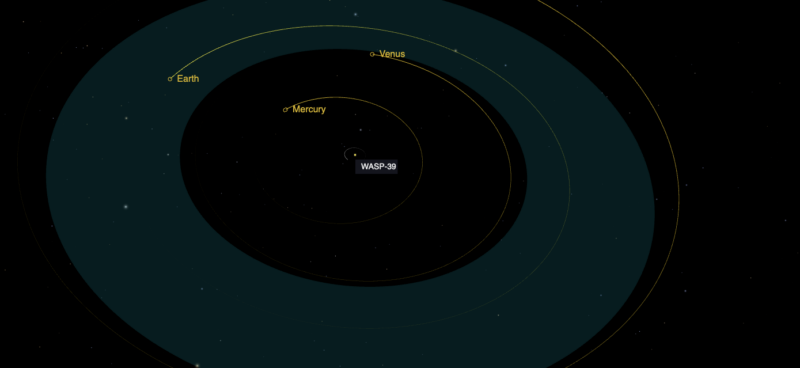
Up until a few decades ago, the only planets we knew about were in our own Solar System, and that shaped the way we thought about planet formation and planetary chemistry. Now, with the identification of a large population of exoplanets, we have a lot of examples of things we've never seen before: mini Neptunes, super Earths, and hot Jupiters abound.
Figuring out what all these new things tell us is a bit of a mixed bag. It's relatively easy to determine a planet's density and how much energy it will receive from its host star. But a given density is typically compatible with a range of materials—solid rock can work out to be the same as a large metal core and puffy atmosphere, for example. And the planet's temperature will depend heavily on things like the composition of its atmosphere and how much light its surface reflects.
So figuring out what we're looking at when we see data on an exoplanet is hard. But with the successful commissioning of the Webb Space Telescope, we're starting to get a bit further. In Wednesday's issue of Nature, scientists used data from the new telescope to infer the chemistry of a hot gas giant and find that there are things going on that we wouldn't see in our own Solar System.
Big and hot
The target of the investigation is the exoplanet WASP-39b, which is about 700 light-years from Earth. It's a gas giant, but its mass is considerably smaller than Jupiter's, by two-thirds. Despite that, it's considerably larger than Jupiter, with a radius that's 1.7 times as long. A big contributor to that is the fact that the planet is hot. Its orbital radius is less than 5 percent that of Earth's, and it only takes a bit over four Earth days to complete an orbit. The star it orbits is not some dim dwarf, either; it's roughly the same size as the Sun and heats the planet to roughly 900° C.
So, WASP-39b is nothing like any of the planets in our Solar System. Which makes it a great option for discovering things we don't see closer to home. It's also an appealing target for observations because its atmosphere is so large. This means that, as the planet passes between its host star and Earth, more of the light from the star will pass through WASP-39b's atmosphere. When it does, chemicals in the atmosphere will absorb specific wavelengths, creating a signature that we can read to learn more about the planet's composition.
For those reasons, WASP-39b was one of the first planets targeted for observations by the Webb Telescope. The data obtained suggested that the planet's atmosphere contains carbon dioxide and sulfur dioxide.
Both chemicals show up in Earth's atmosphere, so their existence isn't much of a shock in that sense. But Earth's atmosphere is an oxidizing environment, so oxidized chemicals are the default. Gas giants, by contrast, are hydrogen-rich, which should make for a reducing atmosphere. We should see water, methane, and hydrogen sulfide, not carbon dioxide and sulfur dioxide.
Reader Comments (35)
View comments on forumLoading comments...